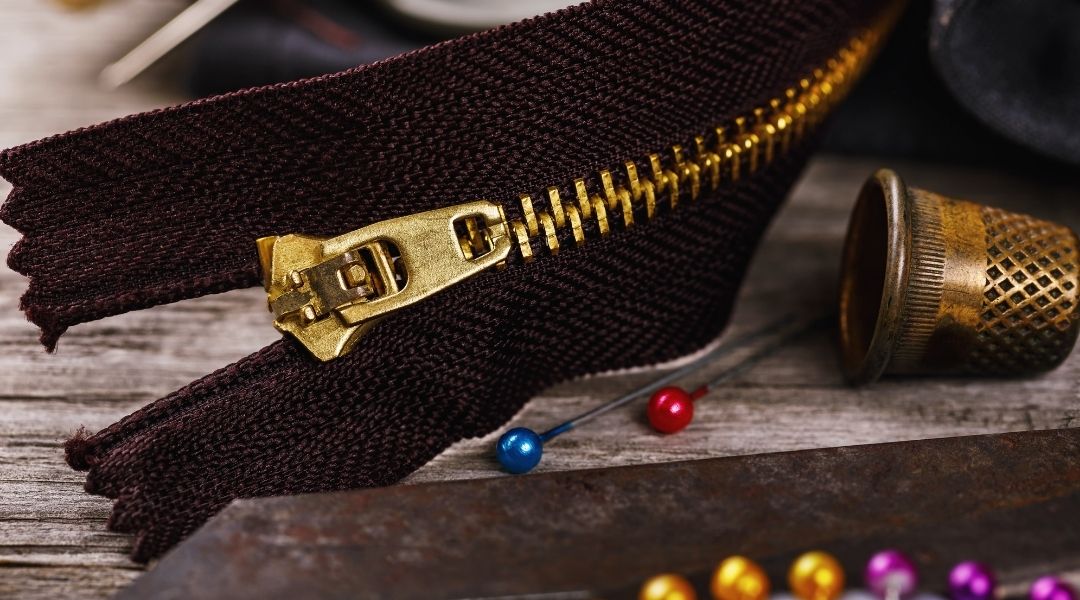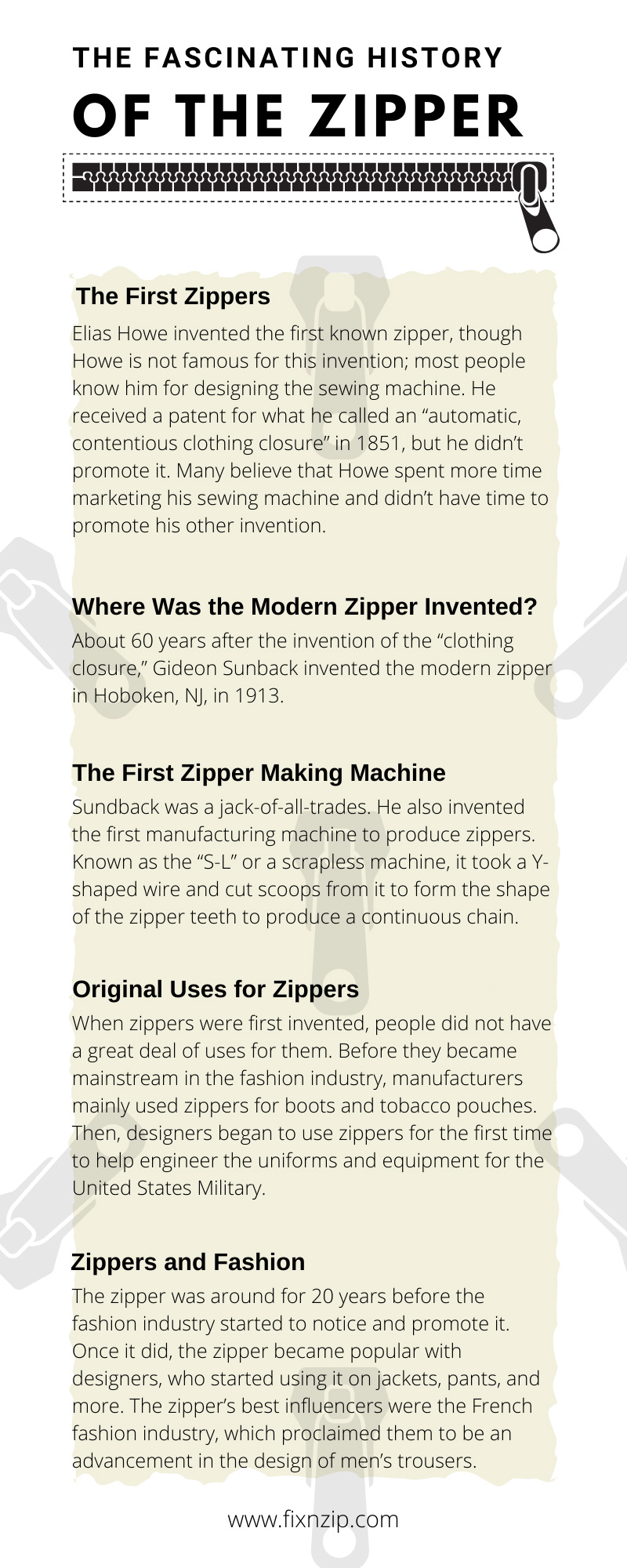
Most people don’t think twice before using a zipper. They’re common on pants, boots, coats, and many other pieces of clothing—not to mention camping gear. Prior to the zipper, buttons were the only option for securing clothing, and we all know how difficult buttons can be to use. Today, designers mainly use buttons for fashionable reasons, as they don’t provide as much security as zippers.
How did our society come to start using zippers, though? Discover the fascinating history of the zipper, and find out who is to thank for your cozy jackets and durable jeans. Modern zippers have only been around for about the last 100 years, which means you might have a parent or grandparent who remembers growing up without them. They may even still have some of their old clothes around! Learn about the invention of the first zippers and how they became popular.
Elias Howe invented the first known zipper, though Howe is not famous for this invention; most people know him for designing the sewing machine. He received a patent for what he called an “automatic, contentious clothing closure” in 1851, but he didn’t promote it. Many believe that Howe spent more time marketing his sewing machine and didn’t have time to promote his other invention.
In time for the 1893 Chicago World’s Fair, Witcomb Judson improved upon Howe’s invention, creating a hook and eye shoe fastener that was more complicated than modern zippers. Though most people know Judson as the zipper’s inventor, he did not use the term and instead called his design a “clasp locker.” He also took the time to market the product, so most people believe he invented the concept. Although it premiered at the exposition, the zipper’s world debut was met with little success.
About 60 years after the invention of the “clothing closure,” Gideon Sunback invented the modern zipper in Hoboken, NJ, in 1913. He was married to the manager’s daughter at the Universal Fastener Company plant, where he became the head designer. After his wife’s death, he buried himself in his work and invented a product that he called a “separable fastener,” for which he received a patent in 1917.
Sundback was a jack-of-all-trades. He also invented the first manufacturing machine to produce zippers. Known as the “S-L” or a scrapless machine, it took a Y-shaped wire and cut scoops from it to form the shape of the zipper teeth to produce a continuous chain. By the first year of use, the machine could produce a few hundred feet of fastener per day.
When zippers were first invented, people did not have a great deal of uses for them. Before they became mainstream in the fashion industry, manufacturers mainly used zippers for boots and tobacco pouches. Then, designers began to use zippers for the first time to help engineer the uniforms and equipment for the United States Military. The first people to really utilize zippers were World War I soldiers.
The zipper was around for 20 years before the fashion industry started to notice and promote it. Once it did, the zipper became popular with designers, who started using it on jackets, pants, and more. The zipper’s best influencers were the French fashion industry, which proclaimed them to be an advancement in the design of men’s trousers. They were also very useful in children’s clothing; zippers are easier for kids to use and, therefore, give them more independence.
Through magazines and the fashion industry, zippers have become a staple in our society. We use them on everything from purses to shoes to jackets to pants, and the most inconvenient thing about them is when they break. Zippers are essential for items that open at both ends—such as jackets and sleeping bags. They are also the most popular fastener for backpacks, luggage, and camping gear.
The zipper has come a long way since its invention. The first zipper was made of metal and wire, while modern zippers are often plastic or metal. Zippers come in a range of colors. Though they originally only came with a metallic look, you can hide zippers by matching the color of surrounding fabrics. Further inventions—such as Velcro and resealable bags—resemble the interlocking teeth of zippers and display the evolution of this technology.
In the past, most people threw away items that had broken zippers. Skilled sewers might have taken the time to use a zipper replacement kit and repair their favorite jackets or purses, but many people are not confident enough in their skills to replace a zipper. Further, you won’t have time to fix a zipper on a tent or sleeping bag if you find out that it needs repair when you get to your campsite with only three hours left until sunset.
The solution is the FixNZip zipper replacement kit, which you can keep around for pesky zippers and carry with you just in case. To use the FixNZip, you turn the thumbscrew to open the slider and then place it on one side of the zipper. If you need to repair an item that caps at the end, bring the FixNZip down to the bottom before tightening; otherwise, you can begin anywhere. Next, slide the other side of the zipper teeth through the zipper slider like you normally would, and adjust the thumbscrew as necessary.
CTF Enterprises invented the FixNZip as an eco-friendly product and solution. The company is in Portland, OR—a far cry from the original zipper’s origins—and is actively committed to developing products that make people’s lives easier and more sustainable. Staff members are active in their community and volunteer with non-profits to help make the world a better place. The FixNZip is part of the fascinating history of the zipper, as it’s the last replacement zipper you’ll ever need.

